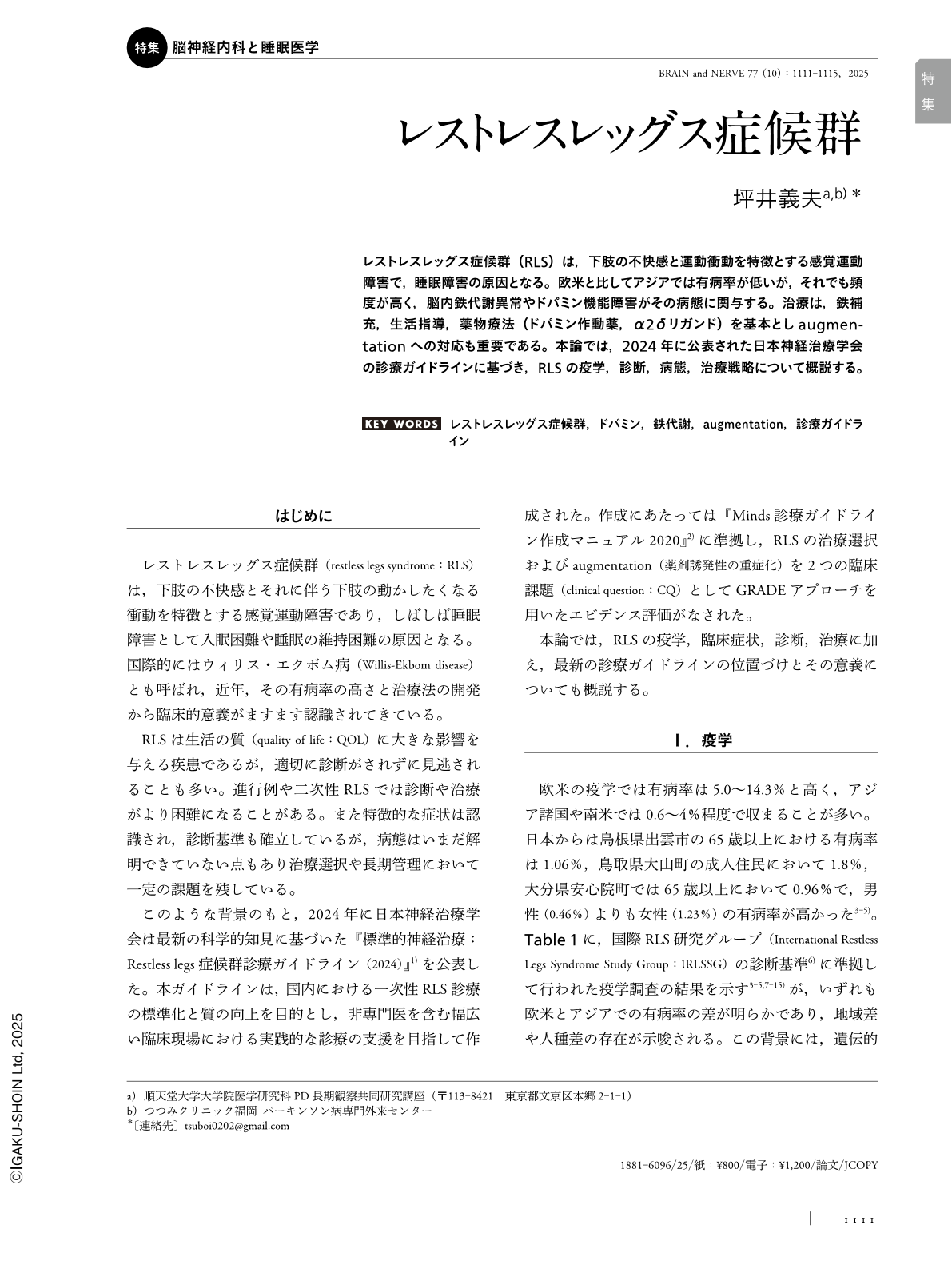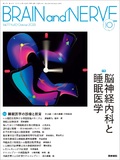Japanese
English
- 有料閲覧
- Abstract 文献概要
- 1ページ目 Look Inside
- 参考文献 Reference
レストレスレッグス症候群(RLS)は,下肢の不快感と運動衝動を特徴とする感覚運動障害で,睡眠障害の原因となる。欧米と比してアジアでは有病率が低いが,それでも頻度が高く,脳内鉄代謝異常やドパミン機能障害がその病態に関与する。治療は,鉄補充,生活指導,薬物療法(ドパミン作動薬,α2δリガンド)を基本としaugmentationへの対応も重要である。本論では,2024年に公表された日本神経治療学会の診療ガイドラインに基づき,RLSの疫学,診断,病態,治療戦略について概説する。
Abstract
Restless leg syndrome (RLS) is a sensorimotor disorder characterized by unpleasant sensations in the lower limbs and an urge to move them, which often results in insomnia or difficulty in maintaining sleep. Although RLS is less prevalent in Asian populations than in Western countries, it remains common and often underdiagnosed. The diagnosis is based on international consensus criteria, and its pathophysiology is thought to involve central dopaminergic dysfunction and impaired iron metabolism in the brain. Management strategies include iron supplementation, lifestyle, and pharmacological treatment using dopamine agonists and α2δ ligands. However, drug-induced augmentation remains challenging. The 2024 clinical guidelines published by the Japanese Society of Neurological Therapeutics provide evidence-based recommendations and a treatment algorithm addressing both standard therapy and augmentation. This review summarizes the current knowledge on the epidemiology, diagnosis, pathophysiology, and treatment of RLS, with a focus on the implications of the new guidelines.

Copyright © 2025, Igaku-Shoin Ltd. All rights reserved.


